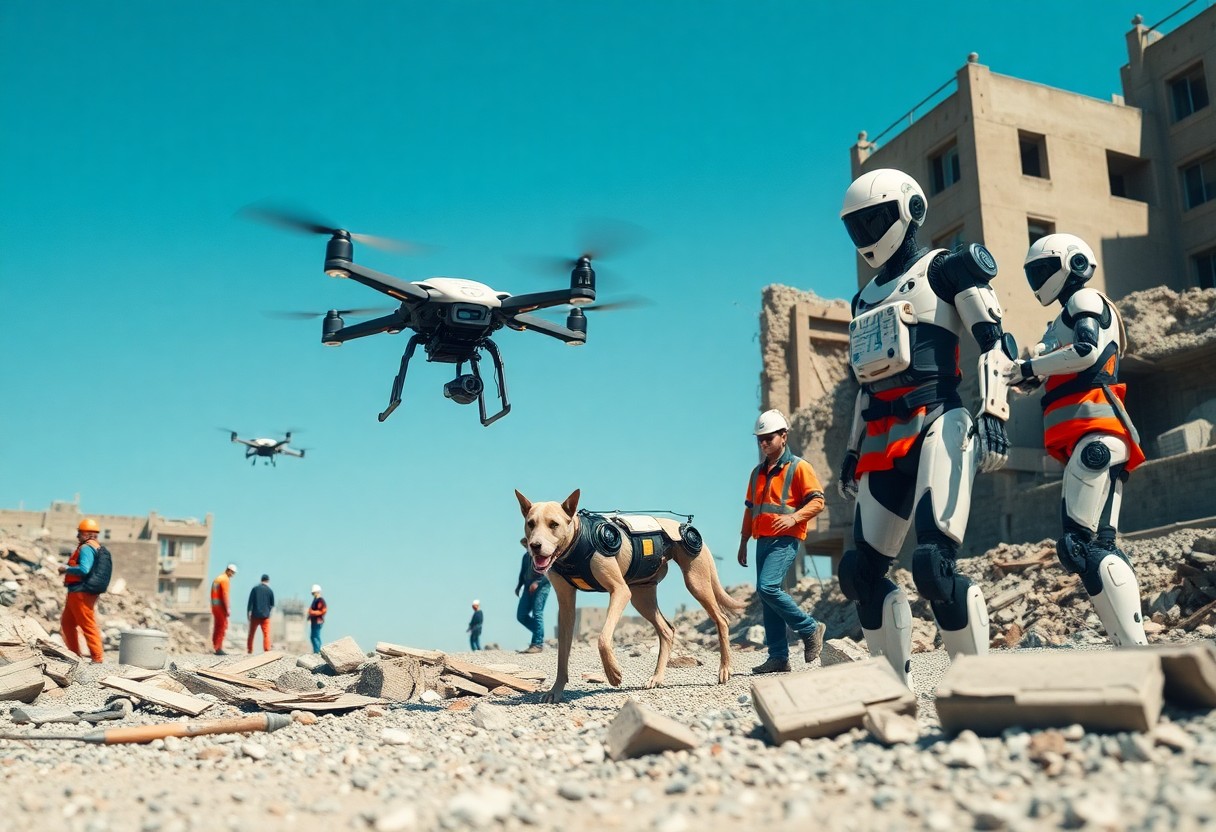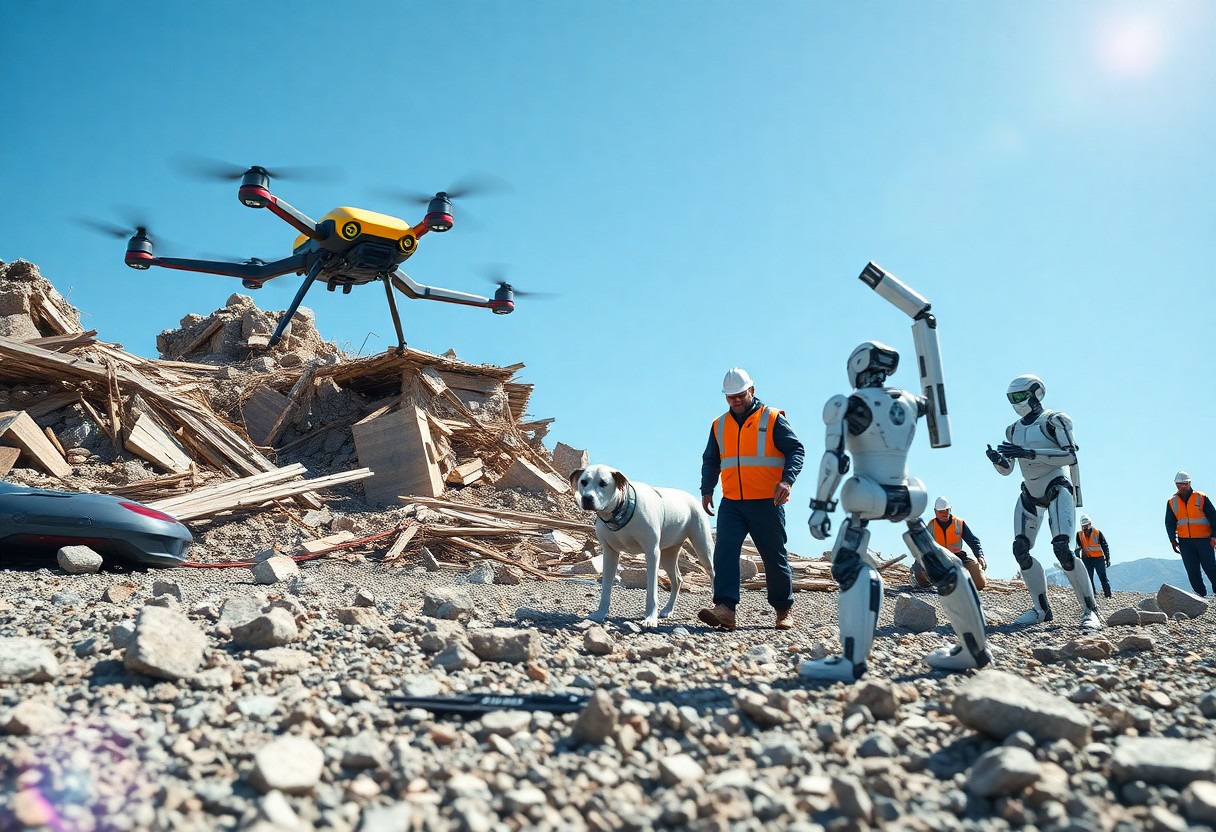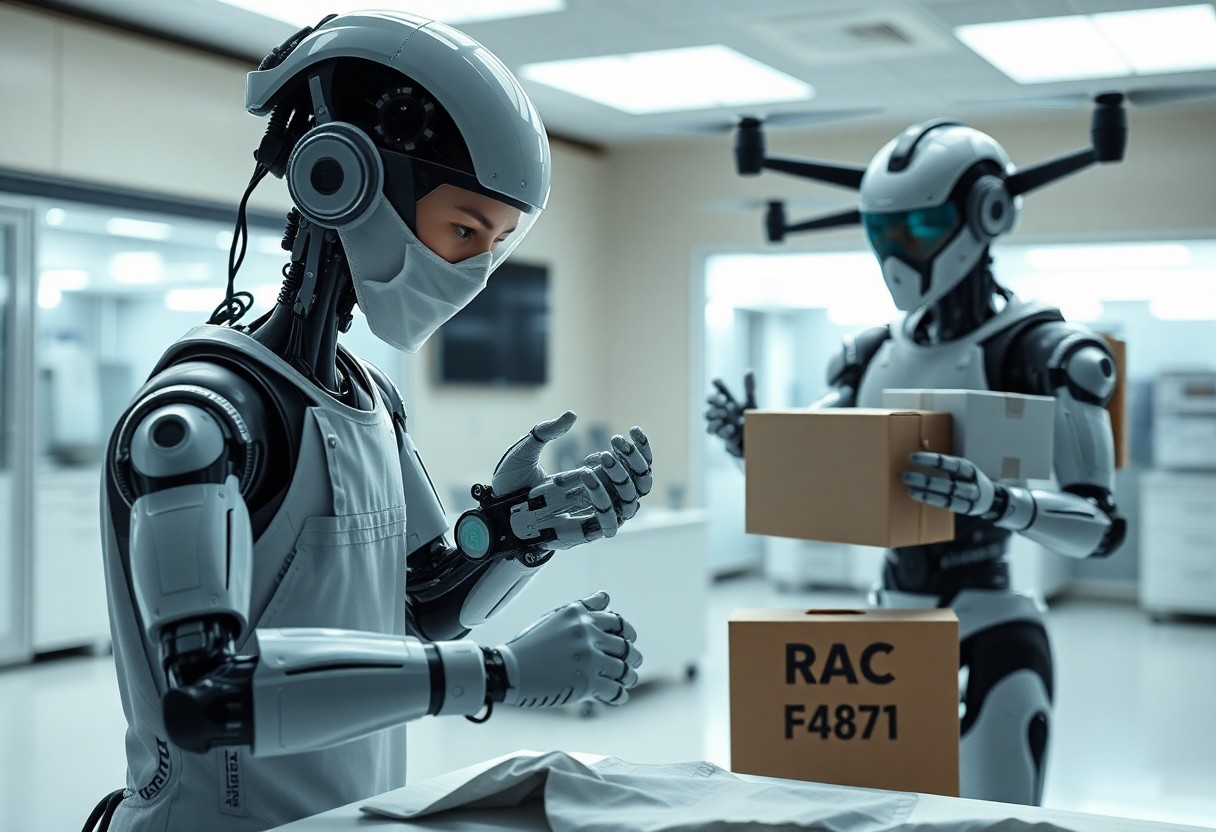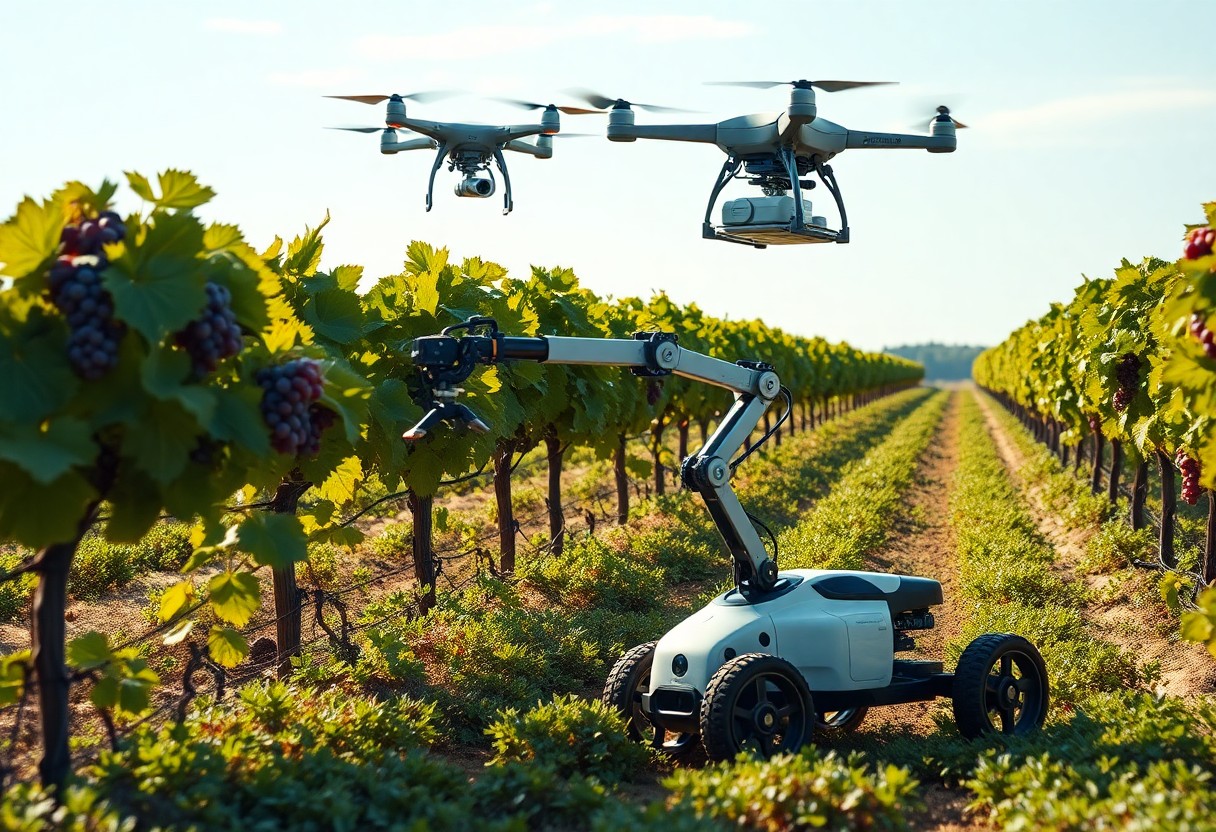With technology advancing rapidly, you are witnessing how robots are transformed into vital assets in disaster relief and rescue missions. These autonomous machines play significant roles in locating survivors, delivering supplies, and assessing dangerous environments. By integrating robotics into emergency response, you gain insights into enhanced efficiency and safety, revolutionizing the way rescue operations are conducted. This post will explore how these innovative tools are shaping the future of disaster management, ensuring that you stay informed about the capabilities and impact of robotics in critical situations.
Role of Robots in Disaster Relief
Robots play a transformative role in disaster relief by enabling faster assessments, improving communication, and executing tasks that might be too dangerous for humans. Their integration into rescue missions helps enhance situational awareness and aid deployment, allowing teams to focus on saving lives with greater efficiency and precision.
Types of Robots Used
Various types of robots are employed in disaster relief, each designed for specific tasks. These include aerial drones for aerial surveillance, ground robots for debris removal and mapping, and underwater vehicles for search and recovery in flooded areas. The diverse capabilities of these robots ensure comprehensive coverage in disaster scenarios.
- Aerial drones for scouting and imaging
- Ground robots for navigation and debris clearance
- Underwater robots for submerged search operations
- Humanoid robots for interacting with survivors
- Tethered robots for sustained power supply in complex terrains
Assume that utilizing a combination of these technologies enables teams to streamline efforts and enhance rescue outcomes.
| Type of Robot | Primary Function |
| Aerial Drone | Surveillance and mapping |
| Ground Robot | Debris removal and navigation |
| Underwater Robot | Search and recovery |
| Humanoid Robot | Communication and interaction |
Case Studies of Robot Deployment
Robots have been deployed in various disaster scenarios, demonstrating their effectiveness in real-world applications. Notable instances include the use of drones in the 2017 Mexico City earthquake, where they mapped structural damage, and the robots used during the Fukushima disaster to assess radiation levels.
- 2017 Mexico City earthquake: Drones mapped 1,500 buildings, improving assessment speed by 70%.
- Fukushima disaster: Ground robots completed radiation surveys in over 20 buildings within weeks.
- Hurricane Harvey (2017): Drones assisted in locating over 2,300 stranded individuals, facilitating rescue operations.
- 2010 Haiti earthquake: Robots aided in searching over 70 collapsed structures, uncovering 20 survivors.
- 2011 Tōhoku earthquake and tsunami: Unmanned ground vehicles identified hundreds of areas needing immediate aid.
Continued advancements in robotics underscore their significant value in disaster relief. In urban rescue operations, data from aerial drones and ground robots often expedite emergency services’ response time. These technological solutions are proving vital in locating survivors and assessing damage swiftly, allowing human teams to prioritize high-need areas with more accuracy.
- Urban Search and Rescue in Christchurch (2011): Robots helped locate 100+ victims, enabling faster retrieval.
- 2018 Indonesia Earthquake: Drones and ground robots aided in collecting data from over 150 km² of terrain.
- 2016 Kumamoto Earthquake: Robots performed over 1,000 successful inspections of damaged buildings.
- Cyclone Idai in Mozambique (2019): Drones surveyed affected areas to assist in aid distribution, mapping over 500 km².
- Tornado recovery in Joplin (2011): Robots provided situational analysis leading to a 30% faster response.
Advantages of Using Robots
Robots offer numerous advantages in disaster scenarios, significantly enhancing the effectiveness of relief efforts. By deploying technology, you can conduct search and rescue operations with precision, rapidly assess damage in hard-to-reach areas, and deliver supplies without exposing human responders to dangerous environments. This technological advancement leads to quicker recovery times and better outcomes for those affected by disasters.
Increased Efficiency
Utilizing robots can drastically improve the efficiency of disaster response operations. Robots can navigate rough terrains and search vast areas in a fraction of the time it would take human teams, allowing for a quicker identification of survivors and hazards. For instance, drones equipped with thermal imaging can locate individuals trapped under debris, enabling faster rescue efforts. This rapid response not only saves lives but also optimizes resource allocation during critical times.
Enhanced Safety for Human Responders
The implementation of robots in disaster scenarios enhances safety for human responders by reducing their exposure to hazardous environments. By allowing robots to enter collapsed buildings, toxic zones, or areas with potential for further structural failure, human teams can focus on strategic planning and support rather than immediate risk. In Japan’s 2011 Fukushima disaster, robots were crucial in assessing radiation levels and inspecting damaged facilities, reducing the likelihood of radiation exposure for first responders.
Challenges and Limitations
Despite their benefits, integrating robots into disaster relief and rescue missions presents several challenges and limitations that must be addressed to maximize their effectiveness.
Technical Limitations
Robots often struggle with environmental variances, particularly in unpredictable terrains typical of disaster sites. Issues like limited battery life, navigation difficulties, and sensor malfunctions hinder their operational capabilities. For instance, robots used in earthquake recovery may face obstacles like debris and unstable ground, which can compromise both their effectiveness and safety.
Ethical Considerations
Deploying robots in sensitive disaster scenarios raises ethical questions, particularly concerning the decision-making capabilities and autonomy of these machines.
Concerns about accountability and responsibility surface as robots take on roles traditionally held by human responders. For example, if a robot inadvertently harms a survivor or fails to perform its function during a critical rescue, assigning liability becomes complex. Additionally, there’s an ongoing debate about the potential for dehumanization in rescue efforts; people may feel that robotic assistance lacks the empathy and compassion inherent in human interactions, potentially affecting morale and trust during crises.
Future Developments in Robotics
Your understanding of disaster relief robotics will expand as innovations continue to shape the future landscape. Advances in artificial intelligence and machine learning will allow robots to adapt to complex environments, making them even more effective in unpredictable disaster scenarios. Enhanced sensory capabilities and improved navigation systems will enable robots to operate in challenging terrains, further increasing their utility for rescue missions.
Innovations in Technology
Current innovations in technology focus on integrating advanced algorithms and enhanced sensor systems, which enable robots to better analyze their surroundings. Developments in drone technology allow for aerial assessments in real-time, while mobile robots equipped with high-definition cameras and thermal imaging enhance situational awareness on the ground. These advancements not only improve efficiency but also ensure safer operations.
Integration with Human Teams
Future developments emphasize the synergy between robots and human teams, fostering a collaborative approach to disaster response. Human-robot teams will leverage complementary strengths, enabling faster decision-making and more effective problem-solving in chaotic environments.
As robots become more integrated into disaster response operations, training exercises will help human responders learn how to work alongside these machines. This collaboration allows for a more streamlined approach, where robots can handle dangerous tasks, while humans focus on critical thinking and emotional support. By continuously refining communication protocols and establishing trust between human operators and robotic systems, your disaster relief efforts will become more cohesive, ultimately leading to improved outcomes in life-saving missions.
Collaboration with Humanitarian Organizations
Collaboration between robotics engineers and humanitarian organizations is crucial for developing effective disaster response solutions. These partnerships leverage the expertise of both fields, ensuring robots are designed with real-world challenges in mind. Initiatives like the Humanitarian Robotics Project exemplify how combining resources and knowledge can lead to innovative robotic applications that actively contribute to saving lives during disasters.
Partnering for Effective Response
Effective disaster response hinges on strong partnerships between robotics developers and humanitarian organizations. By aligning their goals, these collaborations allow for seamless integration of robotic technologies into existing emergency management frameworks. For instance, working alongside organizations like the Red Cross can facilitate the deployment of robots in affected areas where human access is limited, enhancing overall operational efficiency and safety.
Training and Preparedness
Training and preparedness programs for both human responders and robots are vital for maximizing the potential impact of robotics in disaster scenarios. This involves not only equipping personnel with the knowledge to operate and maintain robotic systems but also fostering scenarios that enhance coordination between humans and machines during emergencies.
Training programs often include simulations that mimic real-world disaster conditions, enabling responders to practice working with robots in various scenarios. Incorporating hands-on experience ensures that operators are familiar with the robots’ capabilities and limitations. For example, the use of drones for search and rescue missions requires clear communication and strategic planning among team members. Additionally, ongoing assessments and workshops help refine techniques and improve effectiveness, ensuring that both robots and human teams are prepared when disaster strikes.

Regulatory and Policy Framework
Your understanding of the regulatory landscape governing robots in disaster relief is crucial. Governments and organizations are establishing frameworks to ensure that autonomous robots are deployed safely and effectively in crisis situations. For more insights, check out Autonomous robots for disaster management – AI for Good.
Standards for Robot Use
Standards play a vital role in ensuring the reliability and safety of robotic systems used in disaster scenarios. Organizations like ISO are actively developing guidelines that set benchmarks for performance, interoperability, and safety features, ensuring that robots can work seamlessly alongside human responders.
Funding and Investment in Robotics
Investment in robotics for disaster relief has gained momentum, with various entities recognizing the potential of these technologies. Government grants, private sector funding, and public-private partnerships are driving innovations, enabling the development of advanced robotic solutions tailored for emergency responses.
Funding in robotics for disaster relief has surged, reflecting growing interest from governments, NGOs, and private investors. According to a recent report, global investment in robotic technology dedicated to emergency response has increased by over 30% in the past five years. This influx of capital is not only facilitating the creation of new robotic systems but also accelerating research in AI and automation aimed at enhancing operational efficiency during disasters.
Summing up
Presently, as you consider the role of robots in disaster relief and rescue missions, it’s clear that these technologies enhance your response capabilities. They offer unprecedented access to hazardous environments, enabling you to gather vital information and carry out tasks that would be too dangerous for human responders. By integrating robots into your disaster management strategies, you can improve efficiency and increase the likelihood of survival for victims in critical situations. Embracing these advancements will empower you to make a greater impact in future emergencies.







